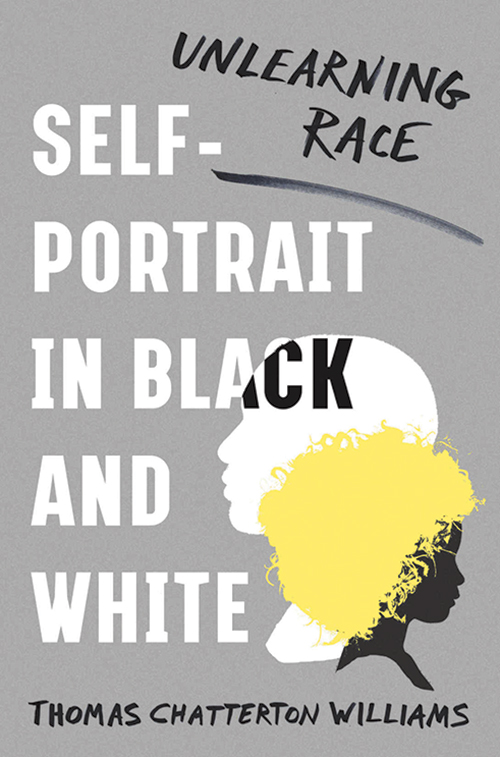
Self-Portrait in Black and White: Unlearning Race
Reviewed by Lauren Brownlee
August 1, 2020
By Thomas Chatterton Williams. W.W. Norton & Company, 2019. 192 pages. $25.95/hardcover; $15.95/paperback (available in September).
A year before his wife became pregnant with their first child, Thomas Chatterton Williams, who has a White mother, a Black father, and a White wife, wrote an article for the New York Times about how any future child of his would be Black. When his first child was born, her complexion was so light that it led him to reexamine all of his previous notions about race, for, as he writes, her “appearance had rendered my previous ‘one-drop’ stance ridiculous.” Self-Portrait in Black and White: Unlearning Race is his attempt to dismantle the rigidity with which people in the United States categorize race. He notes that African Americans have, on average, 75 to 80 percent African ancestry and that around a quarter of White Americans have African ancestry. He wonders why, given so many Americans have mixed heritage, we tend to define ourselves as just one racial category and allow that category to be one of the most significant lenses through which we view the world. He rejects both racism and race, arguing that, “We can simultaneously resist bigotry and imagine a society that has outgrown the identities it preys on.”
Williams’s exploration of Blackness and Black history feels personal to me. Several of his reflections resonate with my own experience. His memory of wanting to go to a high school that would help him to feel connected to Black culture reminded me of my own questioning of whether I would be best served through my Quaker high school or whether I should go to a public school where more people would look like me. His explanations of Black women’s challenges with dating and the stereotypes around aggressiveness revealed that we have shared understandings about some of the realities of “Blackness” in America. His conclusions about how to address those challenges, however, are different from mine. He believes that Black people should reject being labeled as “Black.” I value Black history in shaping the context in which I see myself and the world, whereas Williams believes that a focus on Black history leads Black people to an anger that is “justified and sometimes arbitrary,” and does not move our society forward. He writes:
But history’s utility, while necessary, is diminished greatly when it smothers the light of the present day, overshadowing the genuine possibility and beauty the here and now may contain with reference to nothing further than itself.
He believes that “Blackness” is a box that African Americans need to break out of: “If we are ever to progress, we must first slough off these old skins we’ve been forced to don.”
It was striking to me how similar this book’s exploration of mixed race identity and Blackness is to that of Julie Lythcott-Haims’s Real American, and yet how different their conclusions are. Lythcott-Haims also has a Black father, White mother, and White spouse, and her memoir includes her journey around race, including her experiences parenting light-skinned children. She describes that when her children were young, she began a “new and improved version of [her] parents’ political advocacy campaign (‘You are Black!’)”:
You are part Black, Eastern European Jew, and Yorkshire coal miner.
Your ancestors were some of the most reviled people in history.
Be proud of that and of them.
You have the right to be here.
You come from people who survived.
And whereas Williams questions the value of racial identities, particularly a Black identity, Lythcott-Haims says of Black and Brown identities: “Maybe God did give us the choice. Maybe he gathered a group of souls and asked for volunteers. . . . And the bravest souls looked around at each other and raised their hands.”
I raise the distinction between these two authors’ views not to say that one has the right answers but rather to underscore the importance of recognizing that we are left with more questions than answers when we explore topics of race, racism, and antiracism.
One of my favorite ministers, Reverend Jacqui Lewis, recently declared in a sermon, “Let’s let our past teach our future.” Williams believes that liberation comes from acknowledging history but not allowing it to diminish our own agency. He believes that we will only overcome racism by rejecting race. Although he and I do not see the world in the same way, I certainly agree with the sentiments he shares in the epilogue: that “reality is always stubbornly more complicated” than any boxes that society tries to put us in. This is a book that raises important questions about how we engage with those complications.
Lauren Brownlee is a member of Bethesda (Md.) Meeting and has served on diversity committees in her monthly and yearly meetings as well as at several Quaker schools.


